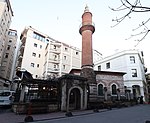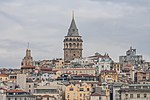St. George's Austrian High School

St. George's Austrian High School (Turkish: Sankt Georg Avusturya Lisesi, German: Österreichisches Sankt Georgs-Kolleg) is a private Austrian-Turkish high school located in Karaköy, Beyoğlu, Istanbul, Turkey. It is one of several secondary schools that were founded by European or American missions in Turkey during the 19th century, but were then secularized after the founding of the modern Turkish Republic in 1923. Today, the school is subject to regulation by the Turkish Ministry of National Education, and almost its entire student body is Turkish, but a large part of its administrative and teaching staff remains Austrian (appointed by the Austrian Ministry of Education, Arts and Culture), and it offers a mixture of Turkish and Austrian curricula in a bilingual environment.
Excerpt from the Wikipedia article St. George's Austrian High School (License: CC BY-SA 3.0, Authors, Images).St. George's Austrian High School
Kart Çınar Sokağı,
Geographical coordinates (GPS) Address Website External links Nearby Places Show on map
Geographical coordinates (GPS)
| Latitude | Longitude |
|---|---|
| N 41.024444444444 ° | E 28.973611111111 ° |
Address
Österreischsches Sankt Georgs-Kolleg
Kart Çınar Sokağı 2
34420 (Bereketzade Mahallesi)
Türkiye
Open on Google Maps








